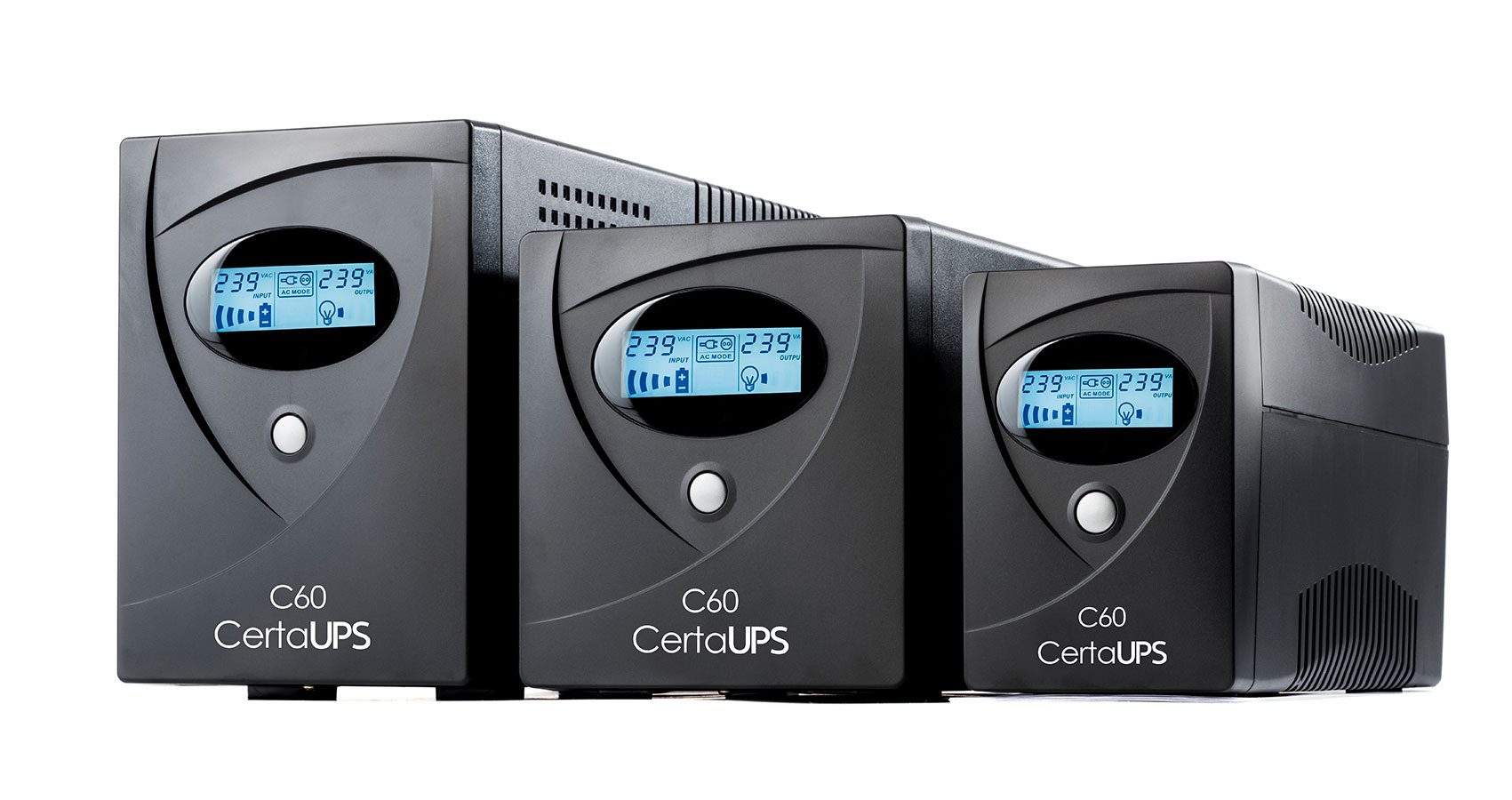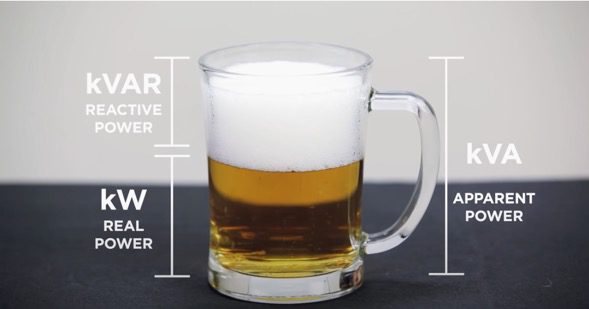11 Oct 2021 Uninterruptible Power Supply (UPS) Buyers Guide

UPS Buyer’s Guide: More Than a Black Box!
THIS BUYER’S GUIDE PROVIDES YOU WITH EVERYTHING YOU NEED TO KNOW WHEN CHOOSING A UPS AND PROVIDES THE BENEFITS OF INCLUDING UPS IN YOUR PORTFOLIO.
You don’t need to be a master electrician or electrical whizz to specify a UPS for your customer. However, at first glance, it might seem that way. It can be daunting. We know that there are many features and specifications you need to be aware of to make the right recommendations to your customers. We’ve tried to break these down into simple, bite-sized explanations and we hope that you will find it useful. At the very least, if you’re new to the world of UPS, you will now be able to hold your own in the conversations around what each feature is.
Although UPS can be considered a basic commodity product, there is more than meets the eye when it comes to positioning the technology, both for you and your customers.
This guide is for you if you want to know more.
What is a UPS?
An uninterrupted power supply or uninterrupted power source (UPS) is basically a battery. It provides power backup. Anywhere there is an appliance, especially if it is business-critical, a UPS system should be a major consideration. A UPS system will provide emergency power when the power source or mains power fails. It also provides more stable power.
Different to a generator, a UPS will provide almost instantaneous backup, mitigating against the risks associated with power interruptions such as voltage spikes, momentary or sustained reduction in input voltage, or instability. All of which can be catastrophic for mission-critical systems and networks and can lead to serious business disruption such as the loss or corruption of files, data, security breaches, injuries, fatalities, or simply just costly downtime.
Equipment and hardware can also be critically damaged by interruptions, so making sure equipment and hardware can be safely powered down is essential. Not only does the uninterrupted power supply (UPS) power down safely, saving hardware and software from damage, but, depending on the battery run-time, it could also allow IT departments to remain up and running for the time it takes to get back up generators in place.
Why is UPS Such a Good Addition to Your Portfolio?
Well, put simply, all businesses need a UPS to power down safely. This will help to prevent loss of data as well as prolonging the lifespan of hardware and electronic equipment. It does this by protecting against surges, unusual voltages, and other power problems. A UPS is vital, so creating or establishing a need should be easy.
- Do you sell networking products?
- Do any of your customers have data that is business-critical?
- Do any of your customers have hardware that is business-critical?
If you answered yes to any of these questions, then your customers already have a need. If you are being asked to quote for any networking hardware, the chances are that there is either already a UPS on-site or there absolutely should be. It’s worth a conversation.
If your end-user already has a UPS, it is worth checking with them when it was last tested and seeing whether you can help them with a refresh. Or if they don’t have a provision at all, then there is a strong case for specifying it – and they will be glad you did.
INCREASE YOUR DEAL SIZES ● INCREASE YOUR NUMBER OF OPPORTUNITIES ● SUPPORT THROUGH YOUR DISTRIBUTOR AND VENDOR ● NO ONGOING COMMITMENT FOR ADDITIONAL ENGINEERS ● A GREAT COMPLEMENTARY PRODUCT ● STOCK AVAILABILITY, READY TO SHIP DIRECT

So, What About The Features?
There are many features. Let’s run through the options, take a look at what they all mean and the impact they have on decision-making.
TECHNOLOGY TYPES OR TOPOLOGY
There are three main topologies and choosing the right one will be about the type of power protection you need.
Online UPS provide the highest level of utility power protection as the batteries are always on and connected to the inverter so there is no power interruption. Online UPS are generally used to support applications of a more critical nature and equipment that is more sensitive to power fluctuations.
Line-Interactive is the most economical option in terms of power consumption and energy. A Line-Interactive UPS only switches on in the event of a failure and may take up to 25 milliseconds to activate. This is not long enough for an objectionable dip or a ‘brownout’ to a personal computer, but it may not be suitable for more sensitive loads such as certain types of hospital equipment, servers or storage devices.
Double Conversion UPS models work by filtering and converting incoming power to DC, then again to perfect AC output, protecting equipment from surges, sags, swells, and line drops.
WHAT ARE THE POWER PROBLEMS?
Okay, so we are all familiar with power cuts and blackouts. But there are many other problems that can be commonly encountered. Each power issue can cause havoc to the running of everyday business. Imagine what it would mean to you and your business if you lost or ended up with corrupted data, damaged equipment, or machine failure. In most settings this can be disastrous, however, in some, it can be lethal. Here are some of the different types of power failure:
● SURGE – A short, sharp, spike in electricity. This can be because of an electrical storm for example. Surges can destroy electronics, circuit boards and components. If it doesn’t take out your equipment, it has the potential to severely weaken it.
● POWER CUT/BLACKOUT – This can be caused by the weather but is often caused by grid failures.
● BROWNOUT – Not quite a full power cut, but this is essentially a reduction in voltage. A brownout can last the same amount of time as a power cut (a few minutes, a few hours, or in extreme cases, longer).
● VOLTAGE SAGS – A sag is another type of under-voltage but a short spike.
● OVERVOLTAGE – This is not a surge or a spike, it lasts a little longer and is not high enough be classed as a power surge. However, it is a ‘higher-than normal’ incoming voltage.
● FREQUENCY NOISE – Regular irregularities and instability. This is also known as ‘Line Noise’ and can be enough to damage electrical equipment over time.
● FREQUENCY VARIATION – this is mainly relevant to the use of generators where the power fluctuates.
Choosing a double-conversion UPS will mitigate against all the risks and problems above, however, you may wish to decide to choose an online or line-interactive UPS based on the types of power problems that are most frequently experienced, what equipment is running and what the use case is.
STATED RUNTIME
What is the runtime? The runtime is the amount of ‘equipment support time’ achieved from the batteries, or in other words, the number of minutes the UPS will stay connected, powering your equipment through any of the power problems you may encounter.
At this point, it is useful to run a few scenarios to effectively plan or your unique use case. Each business will be different.
SCENARIO PLANNING
Think about all the equipment and programs that are running constantly. What needs to stay connected and more importantly, once you have listed these, how long do you need to safely close everything down? Do you just need enough time to save data, and shut down, or do you need time to complete current tasks?
Once you have established what this looks like for your business or your customers’ business, you can better understand what to ask. Runtime is in minutes and because we’re talking about battery power, it’s worth remembering that the larger the wattage connected, the shorter the runtime of your UPS will be.
POWER
This brings us neatly onto power. There are usually two power ratings stated. One is Actual Power (wattage/kW) and the other is VA (kVA). But let’s dig a little deeper and look at what is really going on.
● REAL POWER – kW Actual amount of energy consumed, going to your devices. This is the rating you are looking for when deciding on what you or your business needs to power down safely.
● REACTIVE – kVAR Surplus energy consumed in running the UPS
● APPARENT POWER – kVA (Real Power/Reactive Power) and a mathematical equation.
Total input power of the UPS. Think of this as the full picture. It’s the power you have that is the ‘product’ (kW) and surplus power (kVAR) used in supplying the ‘real power’.

This concept is obviously best understood as a beer analogy…
Wattage – Actual, Real Power Capacity
Now that you know how long you need the UPS to run for, how does it equate to the power rating?
The equipment you use and want to support will bear direct relevance to the power capacity you need to specify. There are likely to be two main areas for consideration in the example of an office. Think about the devices being used by employees and then what hardware you have that supports your network, such as APs, Switches, any on-prem Management, Firewalls, etc.
What you’ll need to do is calculate the overall ‘load’ of the equipment and devices you want to connect to your UPS. You can grab this from the equipment itself but make a list and total it up. If the output is listed in amps, multiply this by the nominal AC voltage to estimate wattage (or use an online calculator).
It is then best practice to add some contingency, something like an extra 20% to account for fluctuations. You might also want to estimate how much you might need in the future before you intend to replace the existing UPS – is there room to grow?
PRO TIP: Replacing an existing UPS? Check on the UPS display & see what wattage has been used.
VA (kVA)
kVA is the ‘apparent power’ (volt amps) which is voltage x current. This represents the total potential max power, but not what is used in Actual Power/ Real Power (wattage).
SINE WAVE (AC)
Look for a UPS with sine wave rather than ‘simulated sine wave’ which is a square waveform. Sine wave is what is supplied by the board. Some devices, such as Apple Mac computers, servers, and some storage devices, are sensitive enough to incur damage via simulated sine wave which is what some UPS’s switch over to in battery mode.
The vast majority of UPS’s do use sine wave, but it is always worth checking. Especially if you are looking to protect servers, or if you have some high-energy efficiency electronics which are also more sensitive.
As always, you get what you pay for, so although pure sine wave is sometimes more expensive, it’s almost always worth it.
POWER FACTOR
Relationship between the stated VA (kVA) rating and the amount of power received from the UPS (wattage). The higher the power factor, the more power output the UPS is capable of.
Calculating your power requirements can be left up to industry tools. If you require any help or support in calculating the best UPS, contact Purdicom. Our technical team can do the heavy lifting for you.
01488 647 647 | sales@purdi.com
HOW MANY OUTLETS?
Make sure you have enough outlets for the number of devices you want to connect. This may seem like a trivial consideration but getting this right is critical! How many cables do you have and are there any power banks that need to be plugged in? You may also need to consider where a PDU bar or automatic transfer switch is required.
DISPLAY
An LCD display seems to be the best option for most applications. This is because an LCD display shows more information, such as input voltage, battery capacity and life. There is also the added benefit of being able to use the UPS without using a computer. For example, to change the settings or issue commands.
FORM FACTOR
There are different ways to ‘house’ a UPS. Some are desktop, others are stand-alone, or you can also get rack-mounted UPS which are ideal for server rooms.
There are a couple of considerations. Obviously, you need to think about the size of the UPS and ensure that the footprint is suitable for the space but also check the weight and make sure it will be compatible with any racking, shelving, or flooring. Batteries are heavy.
Your other consideration with the proposed location is the length of power cables. A UPS needs to fit in place without blocking cooling fans.
● DESKTOP – A compact and practical desktop UPS is usually a lower power unit and can sit on or under a desk, wired directly into the equipment it needs to support.
● TOWER – Much like you’d expect, a tower UPS is much like a PC tower in that it can sit comfortably on the floor or a desk. Typically, the outputs are at the back of the unit.
● RACKMOUNT & U-SPACE – Designed to fit onto racking, the measurement you need to consider is the ‘U-Space’. This is a specific unit. One rack unit (1U) = 1.75” height. Some rack-mounted UPS’s can be stored on their side in a stand like a tower.
ENVIRONMENT
The environment is incredibly important when deciding where to house your UPS. Environmental conditions such as temperature, ventilation and weight all impact the best place to keep the UPS. Choosing the right environment and the right conditions will help to optimise the battery life, and protect critical components, maximising the performance of the UPS.
NETWORK ALERTS
Some UPS systems can be managed over a network and have the ability to alert network managers to relevant incidents and issues such as a power outage, overload or surge events, amongst many other impacts. This can be a particularly useful feature. Likewise, look for a UPS which can alert you to how much power is remaining or the lifetime of the batteries. If battery life is low, this will enable the user to get replacements in place well ahead of time.
WARRANTY
Not all UPS vendors are equal – some are just better! CertaUPS offers an additional year on top of the industry standard. The warranty for CertaUPS products is three years.
